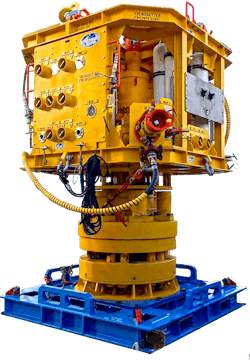Equinor has awarded Subsea Integration Alliance a front-end engineering design (FEED) contract for the Bacalhau (formerly Carcará) project offshore Brazil.
The contract is based on a two-step award. The FEED and pre-investment start now, with an option to progress to the execution phase under a lump-sum turnkey contract that includes engineering, procurement, construction, and installation for the entire subsea umbilicals, risers and flowlines (SURF) and subsea production systems (SPS) scope. Option for the contract is subject to Equinor’s planned investment decision in late 2020.
Located in the presalt Santos basin, the field development will include 19 wells. Subsea Integration Alliance will also be responsible for life-of-field support, representing a fully integrated contract model across the entire field life cycle, from engineering and early engagement to aftermarket services.
Project management and engineering will take place in Rio de Janeiro with support from Subsea 7’s Global Project Centres in the UK and France and various OneSubsea offices. Offshore installation activities are scheduled for 2022 and 2023.
Henning Berg, CEO, Subsea Integration Alliance LLC, said: “The award comes on the back of a design competition where we have demonstrated our ability to maximize asset value through our integrated field development service. This involves dynamically connecting reservoir, production and economic models with well, subsea infrastructure and topside facilities in a single, collaborative environment using the Subsea Planner collaborative field development solution.”
The Bacalhau field is 185 km (115 mi) from the coast of the State of São Paulo in water depths of about 2,050 m (6,726 ft).
Bacalhau is Brazil’s first integrated SPS and SURF project.
Skogul nears startup offshore Norway
Aker BP expects the Skogul field in production license 460 in the North Sea to start-up this month. The Norwegian Petroleum Directorate (NPD) gave the company the greenlight to start production at the end of February.
Located 220 km (137 mi) northwest of Stavanger, the field was discovered in 2010 and the plan for development and operation (PDO) was approved in early 2018. Development was through a seabed template, tied in to the Alvheim FPSO via the Vilje field facilities. The PDO estimated development costs at about NOK1 billion ($107 million). Subsea 7 secured the EPCI contract and deployed its pipe-in-pipe technology.
Aker BP estimates recoverable reserves at 9.4 MMbbl, making this one of the smallest fields on the Norwegian shelf.
Arvid Østhus, the NPD’s assistant director Development and Operations - North Sea, said: “Skogul contributes to good resource exploitation in the Alvheim area. The project serves as an example that even small fields can create value for the licensees and the Norwegian society.”
Shell, i-Tech 7 team up on subsea digitalization
i-Tech 7, Subsea 7’s Life of Field business unit, and Shell International Exploration & Production Inc. have entered into a collaborative technology agreement to accelerate subsea digitalization. The initial five-year period began in 4Q 2019.
The companies said the agreement will help fasttrack innovation and streamline the adoption of applied technologies in areas such as marine robotics, advanced sensing, artificial intelligence and autonomous systems to address the industry’s challenges to improve safety, cost-efficiency, and sustainability.
Steve Wisely, senior vice president for i-Tech 7, said: “…this partnership will help accelerate the development and deployment of digital asset integrity management services to support Shell’s offshore assets in the region.”
Trendsetter boosts subsea well intervention capability
Trendsetter Engineering has added a second subsea tree injection manifold (STIM) to its inventory.
The STIM‐II has completed all testing and is now ready for deployment for subsea hydraulic intervention operations.
With a pressure rating of 15,000 psi (1,035 bar), flow rates in excess of 12 b/m and a water depth rating of 10,000 ft (3,048 m), the STIM systems are said to be suited for live well acid stimulation and abandonment as well as hydrate and flowline remediation operations.
Ashtead books another Barents Sea installation job
Ocean Installer has contracted Ashtead Technology to supply its Deflection Monitoring System (DMS) to support installation of six integrated template structures in the Norwegian Barents Sea. It follows Ashtead’s part in last year’s installation of nine integrated template structures at Equinor’s Askeladd and Johan Castberg fields in the southern Barents Sea.
During placement of the structures underwater, the systems were configured for autonomous independent operation and data communication to a nearby installation ROV. •





